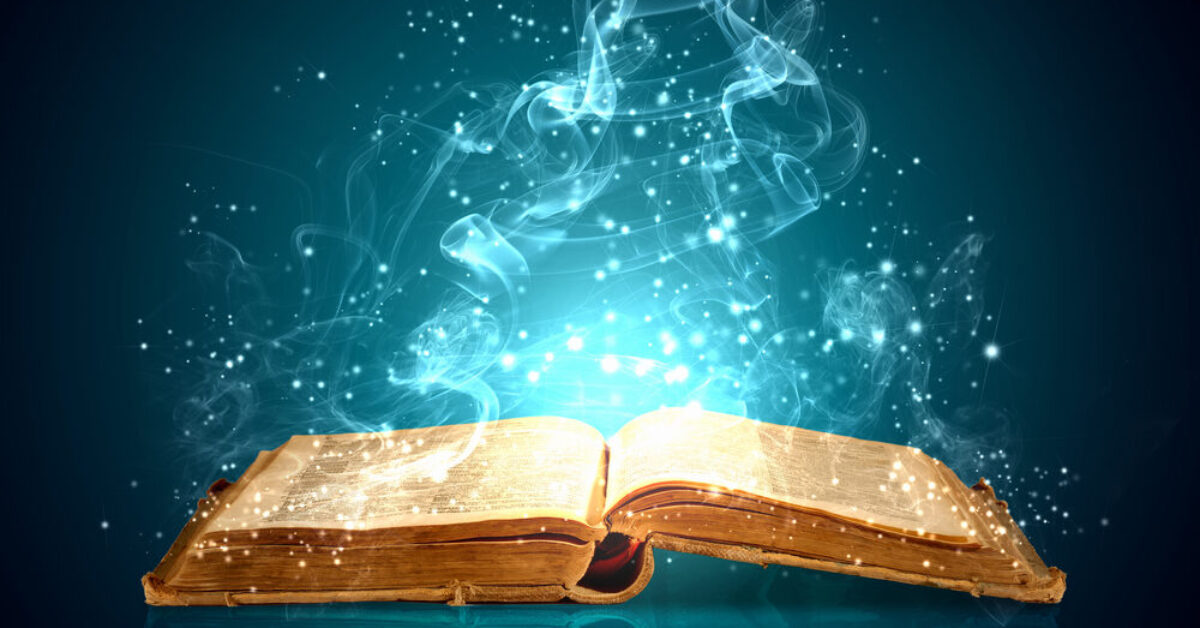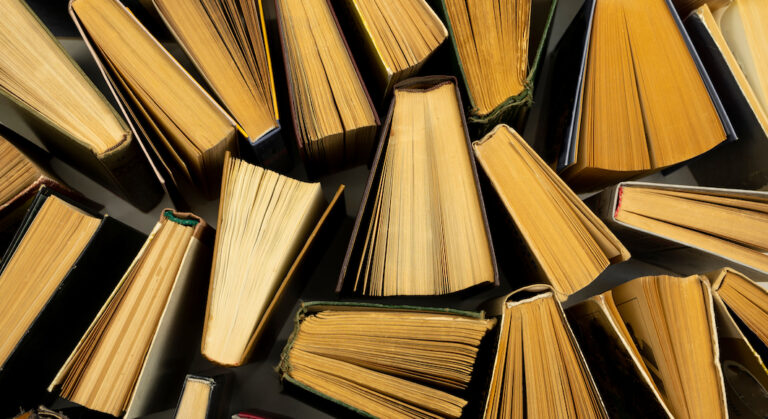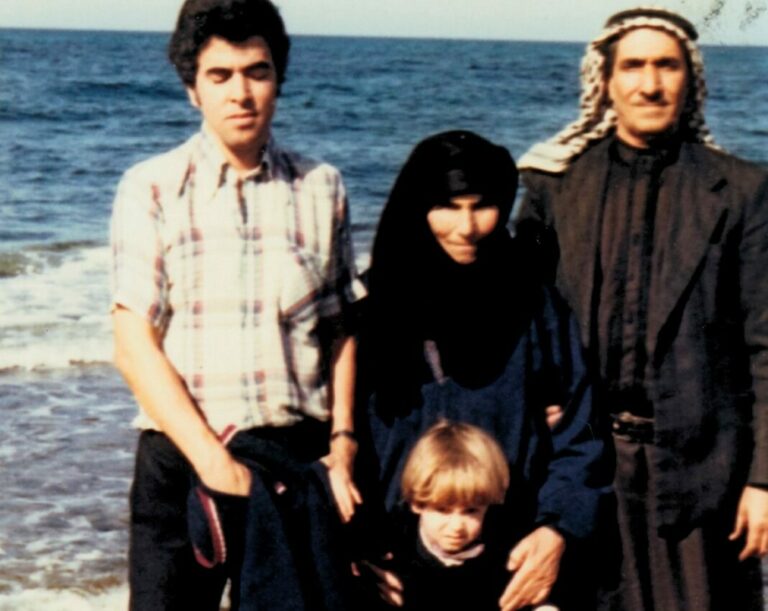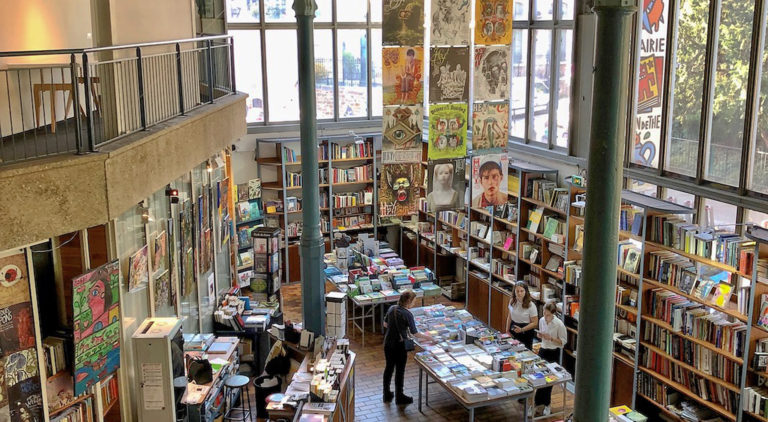A good book on your bedside table can offer refuge like none other. Whether you need to unwind for 30 minutes while your baby naps; you need to dream someone else’s dreams before bed; or you wake in the middle of the night and need to wile away the wee hours, here are 8 books you can lean on. Our generous Frenchly writers have contributed their favorites–both old and new– for you to consider for yourself or someone special in your life while winter descends.
1.The Art of Losing by Alice Zeniter (2021)
The story of three generations dealing with the aftermath of the Algerian War of Independence, The Art of Losing is a challenging read. The award-winning novel, published in France in 2017 and released in English this fall, is a hefty 448 pages. It’s narratively complex and so upsetting, I had to put it down partway and read something else for a while.
But I went back. I wanted to know what happened to these characters, especially Naïma, whose story I fell in love with in the prologue. Naïma is a sassy Parisian who works in an art gallery who’s sleeping with her married boss. She’s also a bit of a lush. Her mother is French, and her father was born in Algeria, but left as a child and claims to remember nothing of his homeland.
I began reading excited to spend the brick of a novel with Naïma, only to have my bubble burst eight pages in, when the narrative leapt back two generations into the life of her grandfather, Ali, as a young man in Algeria. A wealthy and respected war veteran and owner of olive groves, Ali lives a satisfying life, until the Algerian Front de Libération Nationale (FLN) begins gaining power in its efforts to force the colonial French from the country. In an effort to protect his family, Ali resists the rebel forces and ultimately flees to France, forever labeled a harki, the derogatory name given to those who collaborated with the French. In France, the family lives in squalid conditions in a refugee camp and eventually moves to a cramped settlement in the north. The narrative then shifts to Ali’s son (and Naïma’s father), Hamid, as a child traumatized by the atrocities of war and as a young adult determined to never look back, to become as French as possible.
As for Naïma, she is eventually forced to travel to Algeria for work, to gather artwork for the retrospective of an Algerian artist. In this context, she learns about the violence that informed the lives of her grandparents, her father, herself, and all the immigrants, in fact, who left everything behind in a desperate flight for safety, immigrants with rich histories and inner lives who are regarded with fear and suspicion, reduced to the color of their skin each time a terrorist attack occurs on French soil.
Zeniter has an incredibly beautiful way of collapsing time, showing us that the past is the present and the present the past. The horrors of the parent remain within the child—to believe otherwise is naïve. Traveling through the region where her father was born, Naïma and her friend stop in Palestro, the city closest to her family’s home. The omniscient narrator reminds us of a terrifying moment, when Ali stood outside an ice cream parlor as a bomb exploded inside. “If she [Naïma] knew that in the late summer of 1956 her grandfather stood on this square, just a few meters from where she is standing now, caught in the shower of glass, plaster, and blood, she might consider the scene more intently, substitute familiar faces for those of passersby, ask Ifren for a few more minutes so she can try to imagine the noise and the fear. But she knows so little that she is eager to leave the capital, and with no regrets she slips back into the old car.” In this moment, and throughout this informative and mesmerizing novel, we grasp the vast chasm that separates the generations—as well as the history and loss that irrevocably binds them.
Andrea Meyer’s first novel, Room for Love (St. Martin’s Press) is a romantic comedy based on an article she wrote for the New York Post, for which she pretended to look for a roommate as a ploy to meet men.
2. The Anomaly by Hervé le Tellier (2021)
Just published in English, The Anomaly is the translation of a book, called L’Anomalie in French, that everyone in France seemed to be reading this year.
For a book to sell 1 million copies in the U.S. is special. In France, a much smaller country, it is rare indeed. The last time it happened was in 1984, with Marguerite Duras’s The Lover (L’Amant.) The Anomaly is at 1.1 million and counting.
Why is the book such a phenomenal best-seller? It certainly helps that it won France’s top literary prize, the Prix Goncourt, in 2020. And having so many people being stuck at home due to Covid must have contributed. But it’s more than that—the book is both a page-turner and one that makes you think, really think.
The story is divided into three parts. In the first, we meet the book’s main characters in a series of short chapters: a writer, an architect, a contract killer, and others. At this point the book feels disjointed—what do these people have to do with each other? Keep reading and you’ll find out!
In the second part of the book, something crazy happens, something impossible—the anomaly. The powers that be are brought together to decide what to do: politicians, scientists, generals, the leaders of different faiths (the sniping between these religious leaders is hilarious.) They have to decide how to react to the anomaly, and what it implies about the nature of reality itself.
The third part of the book is the best, where we see how the anomaly affects the characters we met at the beginning. They are all touched by it in an extremely personal way, and they all react differently. It is a compelling exploration of human nature in its many forms. I found myself wondering over and over, “How would I react if this happened to me? Like him? Like her?”
Saying more will spoil the plot, and the book’s surprises are part of the fun. Just read it for yourself. After all, one million of les français can’t be wrong!
–Keith Van Sickle is the author of An Insider’s Guide to Provence.
3. My Life in France, by Julia Child with Alex Prud’homme (2006)
It was all there at that first meal: The food, the place, and the six-foot-two inch, 36-year-old American woman who sat down to eat lunch at the Michelin recognized La Couronne, in a medieval cruck-timbered house in Rouen. It was Wednesday, November 3, 1948. The woman had landed that morning in Le Havre from the SS America, with her husband, Paul Child, and a large sky-blue Buick station wagon. Her name was Julia Child.
Julia did not speak French. She asked Paul, who had lived in France and did, what the two businessmen at the next table were discussing at such length with their waiter, an older, dignified man. “The waiter is telling them about the chicken they ordered, how it was raised, how it will be cooked, what side dishes they can have with it, and which wines would go with it best.”
“Wine?” Julia said. “At lunch?”
Julia knew nothing about food, or how to eat it. Paul ordered for them both: oysters portugaises, with slices of pale rye bread spread with beurre d’Isigny. Then, after consulting with the waiter, sole meunière. “It arrived whole: a large, flat Dover sole that was perfectly browned in a sputtering butter sauce with a sprinkling of chopped parsley on top.”
The rest is history. Three years later, Julia graduated from the famous Cordon Bleu cooking school, and a decade later published the work for which she will be best known: The 726-page Mastering the Art of French Cooking. The book became an enduring best-seller, influenced generations of Americans, and Julia became a public television character called Julia Child, as well known as Big Bird and Elmo.
But that 1948 lunch took place at a unique moment. France was still what most Americans would call a backward country of filthy toilets and partly in ruins. Few Americans outside of large and sophisticated cities had any knowledge or experience of French cooking. Julia brought a native rube’s palate, a rare talent, persistence, and good humor, to discovering the cuisine of France and teaching herself how to make it.
My Life in France (finally published in 2006) is an adventure far deeper, more authentic, less posturing, and more illuminating of France than Peter Mayle’s A Year in Provence, or Hemingway’s A Moveable Feast. It’s a time capsule of that lovely, historic, long gone time. A true feast for anyone who loves France.
—Peter Nichols is the author of the bestsellers, The Rocks, a novel, A Voyage For Madmen, nonfiction, and four other books of fiction and nonfiction.
4. My Paris Dream: An Education in Style, Slang, and Seduction in the Great City on the Seine by Kate Betts (2016)
The former editor of Vogue and Harper’s Bazaar, and the author of Everyday Icon: Michelle Obama and the Power of Style, Kate Betts, has written a 1980’s coming-of-age tale based on her own experience as a journalist in Paris. From working as an au pair in a BCBG-type family, to meeting Christian Louboutin who shortly after became her close friend, to becoming a journalist who covers only the most prestigious fashion shows ( while still shopping at the outlets), Betts paints a beautifully insightful story of an American outsider becoming an insider in Paris. Being a journalist and fashion lover myself, I’ve always found Betts’ journey incredibly inspiring. It isn’t your typical Emily in Paris, cliché, but rather a real and professional progression of a talented American journalist in the City of Light. And by demonstrating the realities of Parisian life, this memoir brings to life the enchantment of the city to this day. Because no matter what there will always be something glamorous about working in fashion in Paris. Betts keeps the dream alive for me, too!
—Angelika Pokovba is a lifestyle writer who loves fashion and dreams of attending Paris Fashion Week one day.
5. The New Parisienne: The Women & Ideas Shaping Paris by Lindsey Tramuta (2020)
I’m a long-time fan of Lindsey Tramuta, the Paris-based American food and travel writer who’s on a one-woman mission to transform our perceptions of the French capital from a slightly stodgy cultural amusement park, rich in history and olde world charm, to the vibrant 21st century city that it is. In her first book, The New Paris: The People, Places & Ideas Fueling a Movement, Tramuta reports on a new generation of forward-looking Parisians, radically changing up the worlds of food, wine, and design. In The New Parisienne: The Women & Ideas Shaping Paris, Tramuta upends the tired stereotype of the French Girl. You know who I mean. That heroin-chic thin, chisel-jawed, full-lipped girl. The one who lives on cigarettes, champagne, and couture in her airy, high-ceilinged Parisian apartment, the kind only the very rich can afford. The girl birthed by marketers and aimed at dreamy-eyed Francophiles who half-hope that a Chanel bag and red lipstick will transform them. (I admit to having entertained this fantasy many times.) The true Parisienne, it turns out, is a lot more interesting than all that. Tramuta presents us with a fabulous roster of film makers, chefs, designers, urban strategists, coffee roasters, aeronautical engineers, entrepreneurs, songwriters, journalists, doctors and activists. They come from all over the world, these new Parisiennes: Chile, Italy, Lebanon, Mali, Mexico, Morocco, Nigeria, Spain, and the U.S. It’s refreshing how different they all are from one another, how intelligent, opinionated, and lively. The New Parisienne is beautifully designed and liberally sprinkled with fab photos of Paris (photography by Joann Pai). And because Tramuta (herself a new Parisienne) is nothing if not practical, she asked each of her subjects to offer a list of their top spots in Paris, including their favorite woman-run business, neighborhood, and local haunt. It’s a coffee table book with brains, and I dip into it whenever I’m feeling the need for some genuine Paris-flavored inspiration.
—Karen Karbo is the author of fourteen award-winning novels and works of non-fiction including the international bestseller, The Gospel According to Coco Chanel. She lives in Collioure, France.
6. Paris to the Past: Traveling Through French History by Train by Ina Caro (2012)
Almost twenty years ago, the American writer Ina Caro, accompanied frequently by her husband, biographer Robert Caro, combined her love of France, travel and history in the unique book, The Road from the Past: Traveling Through the History of France, a chronological car tour beginning with the Roman conquest and ending in the late 19th century.
Sixteen years later, Caro published another book, Paris to the Past as a slight variation on the theme of traveling chronologically throughout French history. This time, she began every trip from Paris, by train, on either the Métro, RER or TGV. Again, she was frequently accompanied by her husband. This book is, like the first, is written with candor, wit, intelligence and gossip. “I realized I could take either a regular train or the TGV to many of the historic sites I wanted to see in France. Since the TGV travels at speeds over 200 miles per hour, I could reach all but one of the places I wanted to see in 90 minutes and most places in less than an hour and be able to return to Paris the very same night…usually in time for dinner.” The book also includes maps, the time tables she used, taxi & bus service advice to and from destinations and restaurant reviews for the various sites visited.
Starting in the 12th century at the Basilica of Saint-Denis and ending with the Chateaux of Chantilly, she splendidly evokes, with detailed artistic and architectural descriptions, the age castles, fortresses and cathedrals were built in. Not only will the reader learn about the art and architecture of each building, they will discover the fascinating lives of the people who built them.
Caro’s trips were made over a period of years, but her enthusiasm never waned. She says, “This journey through time…is possible since I believe that we are a product of our past and all the generations that have come before us. We are unknowingly touched by ages long ago, sifted through a filter of time, by a mother’s words, books we read, movies seen, our minds becoming the treasure chest or garbage pail of the preceding ages. We need only a remnant of the past, a castle or cathedral seen through contemporary eyes, to make these past ages come alive.” I, for one, have already planned a trip from Paris for the next time I’m there.
—Sue Aran is a writer, and tour guide living in Southwest France: www.frenchcountryadventures.com.
7. That Summer in Paris: Memories of Tangled Friendships with Hemingway, Fitzgerald, and Some Others (1963)
Along with Ernest Hemingway’s A Moveable Feast, and A.E. Hochner’s Papa Hemingway, the book that I would add to the trifecta of terrific books about the “Lost Generation” of writers in Paris would be Morley Callaghan’s memoir, That Summer in Paris.
As a pre-law college student, Callaghan took a summer job at the Toronto Star, where he befriended star reporter Ernest Hemingway, with whom he would spend hours talking about writing, writers, and Paris. “[We] would talk about Sherwood Anderson, James Joyce, Ezra Pound, and Scott Fitzgerald,” writes Callaghan. Hemingway, who had come back to Toronto at his wife Hadley’s insistence to give birth to their first child, told Callaghan about his restlessness to get back to Paris, the only city he said he could really write in.
Hemingway’s tales of life in Paris give Callaghan an obsessive desire to move to there himself , and soon, with his new bride, Loretto, he sets off by steam ship to the City of Light.
There is a matter-of-factness to some of Callaghan’s encounters with greatness that give the narrative an authentic, almost documentary feel. In one such moment, Callaghan is on his way to meet Hemingway for one of their regular sparring sessions at the American Club. Callaghan explains, “When I called for Ernest [he] was waiting, and he had a friend with him, Joan Miró, the great Spanish surrealist painter. Ernest said that Miró was coming with us to act as timekeeper. Miró beamed proudly.”
Callaghan had boxed in college, and his speed and skill earned him Hemingway’s favor and cemented their friendship. Until the publication of That Summer in Paris, there were only rumors as to what actually happened at another sparring session that was said to instigate the final rupture between Hemingway and Fitzgerald. Callaghan reveals the unfortunate incident that took place when, this time, Fitzgerald was invited along as timekeeper. Fitzgerald was elated to be included and saw it as the opportunity for a rapprochement with Hemingway, his hero. It ends badly, with Fitzgerald shattered.
For Paris lovers who like to fantasize about what the city was like at that exciting time, this book is filled with expat writers that helped shape the Paris in our minds. That Summer in Paris is memoir that brings it vividly to life with the sizzle of reality TV and the pleasures a double feature movie.
—Philip Ruskin is an External Lecturer (ESSEC Bus. School), Consultant (food & travel marketing), writer, drummer and regular contributor to Frenchly. He loves to bike around his adopted hometown of Paris. Find him here, on Instagram.
8. Paris to the Moon, by Adam Gopnik (2001)
“We have a beautiful existence in Paris, but not a full life,” Adam Gopnick recalls his wife, Martha, saying to him in Paris to the Moon, as they prepared to return to New York at the end of the millennium. “And in New York we have a full life and an unbeautiful existence.”
In his 2000 memoir, written while chronicling his experiences of expatriate life for The New Yorker, Gopnick strings together the moments that made his life abroad shine — from the simple pleasure of shopping for produce to promenading with his son and drinking chocolat chaud at the Ritz — and intersperses them with the harsher realities (bombs, bureacracy) of living and raising a family away from home. The result is a bijou of a book that is as delightful and insightful on its fifth read as it is on the first.
I felt a deep sense of kinship with Gopnick’s memoir, which I read while living in Saint-Germain-des-Prés and wandering the same streets he did, fancying myself a fellow chronicler of Paris, albeit an unemployed one.
I attempted to follow in his footsteps, allowing his observations to color every place I went: the “musicless and graceless” carousel in the Luxembourg Garden, the “hole punched in a wall” on rue de Seine that leads onto the Institut de France; I took a trip to Deyrolle, the famous taxidermist shop which he describes as one of the “great surrealist sites of Paris.” As he promised, the stuffed lions, jaguars and baby elephants stand around “looking bored and social, like writers at a New York book party.”
As a writer and a Francophile, I consider Paris to the Moon a bible of sorts. Gopnick catalogues the quirks and charms of the city and its inhabitants with such humor and precision that you could read the book without ever visiting, and you’d still come away feeling like you know Paris.
But truth be told, you’ll likely book a one-way flight before you’re even halfway through.
Sophie Dodd writes about her love of Paris, wine and Robert Pattinson’s hair, in no particular order. You can follow her adventures in Brooklyn and beyond on Instagram.






